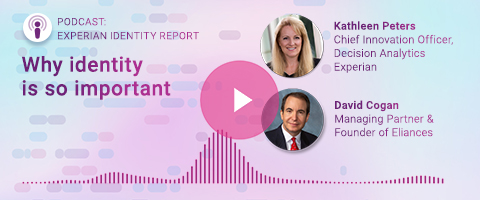Financial Services

The collections landscape is changing due to shifting consumer behaviors, demands, regulations and an economy that’s in a constant state of flux. As the market evolves, the need for greater insight and analysis grows. Matthew Baltzer, Experian’s Senior Director of Product Marketing, discusses challenges facing the collections industry and how you can continue to build a profitable portfolio. For more information on enhancing your collections strategy, view our full Q&A video. Q: Which macroeconomic trends should debt collectors be the most aware of and why? A:While we are still seeing a reasonably healthy consumer, there are trends to monitor. The first would be employment, which continues to be strong. Laid-off individuals are typically able to move back into the labor force. Second, we're seeing strong consumer spending, with rates higher than in the past three years and high origination activity. A third is declining savings rates. During the pandemic, consumers stored away extra cash, which has since come to a halt. Part of that is likely due to inflation, but it could also point to signs of financial strain. Q: How could these trends impact debt collections strategies moving forward? A: At a portfolio level, they’re good news. The average consumer’s ability to pay has yet to degrade significantly. So, collectors should be able to continue collecting payments. However, six months from now, the impact of inflation and interest rates could take a toll, and settlement offers, or higher upfront payments, may be important tools to consider. Due to increasing interest rates, many households will send money to creditors, leaving less for everyday spending. Q: How has the average consumer been affected by inflation? A: As I mentioned, both consumer spending and overall debt are up. However, when it comes to spending, certain ‘categories’ are more impacted by inflation than others. Of course, home equity and mortgages are higher, which while important, is less impactful for debt collectors. In our recent webinar, ‘Economic Outlook and the Influence on Debt Collections,’ we highlighted the uneven impact inflation has on lower earners in categories such as rent, food and energy. Due to this, collectors may see a rise in delinquency rates, particularly in unsecured personal loans and potentially automotive loans. Q: How should consumers' response to inflation impact collections efforts? A: There may be an increase in opportunities in certain trades, such as utilities, automotive and unsecured personal loans. Are you positioned as an organization to target and serve those markets? For those in the industry, the real potential for an economic weakness should present an opportunity to evaluate your collection strategy. How will you adapt to a 20 to 30% increase in volume? What about working accounts with smaller balances, which we've seen more of since the last larger recession? Experian offers software and decisioning solutions that help debt collectors optimize their strategies for an improved return on investment. Q: What consumer specific data can help lenders better predict distressed consumers? A: As an originator, the first approach to consider should be leveraging new types of data that were not available during the last recession, such as trended, third-party and alternative credit data. Supplementary data can provide leading indicators that risk is increasing before a consumer goes delinquent and their accounts are past due. Additionally, advanced analytics scoring models can help you determine which accounts are more likely to be recoverable. Experian has a new scoring model that uses a complex blend of attributes to assess each trade's history and position in wallet to better predict the likelihood of that account self-curing and separate accounts that need the most attention from those that may need more time. Finally, with accurate consumer contact data, you can enhance your digital engagement strategy and reach the right person, at the right time, on the channel they prefer There’s no time like the present to equip yourself with a successful debt management strategy. With a more holistic consumer view, you can improve account prioritization, predictability and right-party contact rates. Learn more about our debt management solutions here. Watch on-demand webinar

Kathleen Peters, Chief Innovation Officer, Decision Analytics for Experian, was recently featured on the Eliances Heroes podcast as part of the new weekly segment, the “Experian Identity Report.” In the introductory show, podcast host David Cogan, spoke with Kathleen about why identity is so important to our society. Listen to the podcast for the full discussion and see the transcript below. Learn more about Experian Identity David Cogan: How critical is it? Well, I’ll tell you. Payment fraud will exceed $206 billion in the next five years and let’s face it. Managing one’s personal identity is very complicated on its own and if the business enterprise managing customer identities in a strategic and secure way and scale across countless interaction is extremely complicated. And it’s only going to get more complex with the future from what I understand and all the technology that’s coming out if not by the day, by the hour. And that’s why we’re bringing this to you. Interviews with the world’s leading experts on the game changing impact of identity and the need to use reliable data to make confident decisions that securely accelerate customer engagement and that’s why we’re honored here today to have with us Kathleen Peters, Chief Innovation Officer, Experian Decision Analytics North America. Kathleen Peters: Thanks so much David, it’s great to be here with you. DC: $206 billion of payment fraud in the next five years? I mean who’s going to want to turn on their computer after this. That is a serious number. What do we do? KP: It’s really important that we get our arms around this both as consumers as well as businesses because we want to engage online. So much of what we’re doing is digital. It especially started in COVID when we were having our groceries delivered and everything else and even our grandparents are having to do their banking transactions online. The world is changing, and fraudsters take notice of that as well. Fraudsters are opportunistic and when they see a bunch of folks doing stuff online that they’ve never done before, they’re seeing that as an opportunity too. DC: You know the days of people horseback riding and overtaking trains are long gone and now it’s all digital. KP: It’s a lot easier these days. DC: Why is identity so important to our daily digital lives and in business? KP: It’s a great question, David. And as a consumer myself, you, and I when we transact online whether that’s to have food delivered, or I’m buying something for my kids or I’m even paying a bill, I want to be able to trust that my information will be safe, that my privacy will be protected and that my experience will be as smooth as possible. I think that’s what we all want. So as consumers and as businesses, how do we enable all the opportunities this new digital world is presenting to us in a way that we are safe and also businesses can transact with us securely and have confidence on who’s engaging with them online. DC: Let’s talk about identity. What really makes identity so challenging to manage at a business enterprise level especially with how complex the business portion is? KP: Absolutely. It really comes down to there are so many elements that comprise our identity. It’s multidimensional. So historically, when we think about identity, we probably think about the things that were on our DL or passport the kind of information that’s pretty static – name, address, SSN, date of birth – those kinds of things. Once we get online, that identity becomes a little more challenging. We’re not necessarily physically in front of the business that we’re engaging with so the business needs to determine if the person is who we say we are. There’s a famous Far Side comic from years ago where a dog is sitting in front of the computer and he says “On the internet, no one knows you’re a dog.” And that still rings true in that you need to be able to ensure that the customer that’s coming to your business online is a real person and not a bot, is a person with good intent and not a fraudster. You need to look no farther than some of the recent controversies around Twitter and Elon Musk’s on-again, off-again, on-again intent to buy the company. A few months ago he had pulled back because he wanted to know definitively how many users on Twitter are humans versus bots and sometimes determining that can be really hard. And that comes down to managing all these new definitions of identity. DC: That’s very important. The thing is businesses and consumers want to know really what to be able to do. So, what kinds of things is Experian able to offer to help with all of that? KP: We’re in a great position as Experian because we have such a depth and breadth of identity data. We have the analytics horsepower and really touchpoints that are really unique when it comes to thinking about identity. So we’ve been talking about these traditional identity elements and digital, online identity. When you think about it, Experian also really understands your financial identity. So when you bring those things together and a consumer is looking to maybe understand what their financial identity means, their credit score or even how to improve their credit score, Experian’s there. We’ve got a robust direct to consumer business, we’ve got offerings like Boost and Go that help people establish and build their credit. We’ve got marketplaces for cards, insurance, etc. And then when consumers want to open a new account at a financial institution, or a fintech, or a retailer, or even maybe buy some crypto or log into a business, Experian can bring that wealth of capability to help our clients, help businesses, separate those good consumers with good intent from the fraudsters and do that very quickly and efficiently so that consumers can have a great experience and build that trust with who they’re engaging with. DC: Kathleen, that’s really amazing. Alright, now with all of that going on, what is Experian doing now with innovating for the identity space? KP: This is a real passion of mine David and this is where I spend a lot of my time. We’re always looking ahead to see what is the new data, new capabilities that can help us improve that consumer experience and engagement, help clients find the right consumers online to engage and target, and really allow our clients to grow their businesses safely. So, we’re building some products in house, where we’re connecting new pieces that might be new to Experian like linking some of that traditional identity data with particular payment instruments. Is this Kathleen’s credit card? Is this my bank account? When I come and try to do transactions online. But we’re also partnering with new companies. There are a number of startups that are being formed that have been in business looking at new ways to stop fraud and new ways to help identify and authenticate users online. So, as we innovate, we’re building some things in house, we’re partnering, we’re investing in young companies, and sometimes we’re even acquiring. So, bringing together that breadth of data, analytics, really trying to think about what will be the next way that we’ll think about identifying ourselves online is some of the ways we’re innovating. DC: Well, we’re very fortunate to have you and your company here to be able to do that because it’s growing by leaps and bounds. I’m amazed by the number $206 billion which is probably going to go higher, so we’re very fortunate that Experian is around and really identifying this issue and trying to do something now. What do you think our audience will learn about these weekly, critical chats about identity with Experian experts? KP: These are going to be great conversations that we’re going to be able to share and talk about how rapidly things are changing and evolving and how this really relates to our daily lives and the things that are going on in this very dynamic economic climate, digital climate, the way things are changing the way we’re engaging. I think people are also going to learn a lot about Experian’s mission around financial inclusion and opportunity creation. We’re a very mission driven company and we’re the consumer’s bureau, so we want to do this journey in partnership with consumers so that you can take an active part in protecting yourself, understanding what’s going on, helping us fight fraud, but also just really be able to take advantage of all of these new opportunities in a safe way.

Today’s changing economy is directly impacting consumers’ financial behaviors, with some individuals doing well and some showing signs of payment stress. And while these trends may pose challenges to financial institutions, such as how to expand their customer base without taking on additional risk, the right credit attributes can help them drive smarter and more profitable lending decisions. With Experian’s industry-leading credit attributes, organizations can develop precise and explainable acquisition models and strategies. As a result, they can: Expand into new segments: By gaining deeper insights into consumer trends and behaviors, organizations can better assess an individual’s creditworthiness and approve populations who might have been overlooked due to limited or no credit history. Improve the customer experience: Having a wider view of consumer credit behavior and patterns allows organizations to apply the best treatment at the right time based on each consumer’s specific needs. Save time and resources: With an ongoing managed set of base attributes, organizations don’t have to invest significant resources to develop the attributes themselves. Additionally, existing attributes are regularly updated and new attributes are added to keep pace with industry and regulatory changes. Case study: Enhance decision-making and segmentation strategies A large retail credit card issuer was looking to grow their portfolio by identifying and engaging more consumers who met their credit criteria. To do this, they needed to replace their existing custom acquisition model with one that provided a granular view of consumer behavior. By partnering with Experian, the company was able to implement an advanced custom acquisition model powered by our proprietary Trended 3DTM and Premier AttributesSM. Trended 3D analyzes consumers’ behavior patterns over time, while Premier Attributes aggregates and summarizes findings from credit report data, enabling the company to make faster and more strategic lending decisions. Validations of the new model showed up to 10 percent improvement in performance across all segments, helping the company design more effective segmentation strategies, lower their risk exposure and approve more accounts. To learn how Experian can help your organization make the best data-driven decisions, read the full case study or visit us. Download case study Visit us

Today's top lenders use traditional and alternative credit data1 – or expanded Fair Credit Reporting Act (FCRA) regulated data – including consumer permissioned data, to enhance their credit decisioning. The ability to gain a more complete and timely understanding of consumers' financial situation allows lenders to better gauge creditworthiness, make faster decisions and grow their portfolios without taking on additional risk. Why lenders need to go beyond traditional credit data Traditional credit data is — and will remain — important to understanding the likelihood that a borrower will repay a loan as agreed. However, lenders who solely base credit decisions on traditional credit data and scores may overlook creditworthy consumers who don't qualify for a credit score — sometimes called unscorable or credit invisible consumers. Additionally, they may be spending time and money on manual reviews for applications that are low risk and should be automatically approved. Or extending offers that aren't a good fit. What is consumer permissioned data? Consumer permissioned data, or user permissioned data, includes transactional and account-level data, often from a bank, credit union or brokerage account, that a consumer gives permission to view and use in credit decisioning. To access the data, lenders create secure connections to financial institutions or data aggregators. The process and approach give consumers the power to authorize (and later retract) access to accounts of their choosing — putting them in control of their personal information — while setting up security measures that keep their information secure. In return for sharing access to their account information, consumers may qualify for more financial products and better terms on credit offers. What does consumer permissioned data include? Consumers can choose to share different types of information with lenders, including their account balances and transaction history. While there may be other sources for estimated or historic account-level data, permissioned data can be updated in real-time to give lenders the most accurate and timely view of a consumer's finances. There is also a wealth of information available within these transaction records. For example, consumers can use Experian Boost™ to get credit for non-traditional bills, including phone, utility, rent and streaming service payments. These bills generally don't appear in traditional credit reports and don't impact every type of credit score. But seeing a consumer's history of making these payments can be important for understanding their overall creditworthiness. What are the benefits of leveraging consumer permissioned data? You can incorporate consumer permissioned data into custom lending models, including the latest explainable machine learning models. As part of a loan origination system, the data can help with: Portfolio expansion Accessing and using new data can expand your lending universe in several ways. There are an estimated 28 million U.S. adults who don't have a credit file at the bureaus, and an additional 21 million who have a credit file but lack enough information to be scorable by conventional scoring models. These people aren't necessarily a credit risk — they're simply an unknown. Increased insights can help you understand the real risk and make an informed decision. Additionally, a deeper insight into consumers' creditworthiness allows you to swap in applications that are a good credit risk. In other words, approving applications that you wouldn't have been able to approve with an older credit decision process. Increase financial inclusion Many credit invisibles and thin-file applicants also fall into historically marginalized groups.2 Almost a third of adults in low-income neighborhoods are credit invisible.3 Black Americans are much more likely (1.8 times) to be credit invisible or unscorable than white Americans.4 Recent immigrants may have trouble accessing credit in the U.S., even if they had a good credit history in their home country.5 As a result, using consumer permissioned data to expand your portfolio can align with your financial inclusion efforts. It's one example of how financial inclusion is good for business and society. Enhance decisioning and minimize risk Consumer-permissioned data can also improve and expand automated decisions, which can be important throughout the entire loan underwriting journey. In particular, you may be able to: Verify income faster: By linking to consumers’ accounts and reviewing deposits, lenders can quickly verify their income and ability to pay. Make better decisions: Consumer permissioned data also give lenders a new lens for understanding an applicant’s credit risk, which can let you say yes more often without taking on additional risk. Process more applications: A better understanding of applicants’ credit risk can also decrease how many applications you send to manual review, which allows you to process more applications using the same resources. Increase customer satisfaction: Put it all together, and faster decisions and more approvals lead to happier customers. While consumer permissioned data can play a role in all of these, it's not the only type of alternative data that lenders use to grow their portfolios. What are other types of alternative data sources? In addition to consumer permissioned data, alternative credit data can include information from: Alternative financial services: Credit data from alternative financial services firms includes information on small-dollar installment loans, single-payment loans, point-of-sale financing, auto title loans and rent-to-own agreements. Rental agreement: Rent payment data from landlords, property managers, collection companies and rent payment services. Public records: Full-file public records go beyond what’s in a consumer’s credit report and can include professional and occupational licenses, property deeds and address history. Why partner with Experian? As an industry leader in consumer credit and data analytics, Experian is continuously building on its legacy in the credit space to help lenders access and use various types of alternative data. Along with Experian Boost™ for consumer permissioned data, Experian RentBureau and Clarity Services are trusted sources of alternative data that comply with the FCRA. Experian also offers services for lenders that want help understanding and using the data for marketing, lending and collections. For originations, the Lift Premium™ credit model can use alternative credit data to score over 65% of traditionally credit-invisible consumers. Expand your lending universe Lenders are turning to new data sources to expand their portfolios and remain competitive. The results can provide a win-win, as lenders can increase approvals and decrease application processing times without taking on more risk. At the same time, these new strategies are helping financial inclusion efforts and allowing more people to access the credit they need. Learn more 1When we refer to “Alternative Credit Data," this refers to the use of alternative data and its appropriate use in consumer credit lending decisions, as regulated by the Fair Credit Reporting Act. Hence, the term “Expanded FCRA Data" may also apply in this instance and both can be used interchangeably.2-5Oliver Wyman (2022). Driving Growth With Greater Credit Access

More than seven million Americans who are unbanked cite high account fees, insufficient funds to meet minimum balances and a lack of needed products and services as the main reasons for not having a checking or savings account.1 Credit unions understand that being unbanked comes at a steep cost and have turned their focus to developing products and strategies that prioritize financial inclusion — a movement to combat inequities in banking and better serve the financial needs of marginalized communities. In 2022, the House passed Expanding Financial Access for Underserved Communities Act to allow federal credit unions to add underserved areas to their fields of membership as a means of improving financial inclusion. “We believe diversity, inclusion, equity, belonging and accessibility has to be weaved into the strategic fabric of an organization [and its] culture," says Max Villaronga, President and Chief Executive Officer of Raiz Federal Credit Union. “When we don't participate in [diversity, equity and inclusion], we are complicit in essentially keeping people out of the banking system." For credit unions, driving financial inclusion starts with setting a vision that will leave a lasting legacy that includes fostering financial empowerment, closing the credit gap and building generational wealth among the communities they serve. Here's a roadmap for getting started. Best practices for engagement Establishing a set of best practices is the essential starting point for improving financial inclusion. The process begins with the mission statement and extends to all aspects of operations from hiring procedures to sponsorships and donations. Villaronga advocates three strategies for engagement: Engage the leadership team Conversations about financial inclusion need to start at the top. The C-suite must be willing to be honest about the barriers and willing to adopt changes that will make credit unions more inclusive. “[T]hese systemic barriers will exist until somebody deliberately moves them out of the way," Villaronga says. “The people who are feeling those barriers are not in the position to do the moving it's up to [CEOs and CFOs] to decide to do something to make a difference." Making a difference starts with choosing a leadership team that reflects the demographics of local communities. Case in point: At Raiz Federal Credit Union in El Paso, Texas, senior management and the board have LGBTQIA+ representation and include members from diverse racial and ethnic identities. The board of directors has also prioritized creating a pipeline that will attract more diverse talent to the board. “Many of [our board members] come from underserved backgrounds in our border community," Villaronga says. “This is a very personal journey for them because they can see themselves in the lives of the people we're serving." Build trust in underserved communities According to an FDIC Survey, “unbanked" U.S. households listed a lack of trust in financial institutions as a top reason for not having a bank account. And lack of access to a checking or savings account is most prominent among racial and ethnic minorities and low-income communities.2 Actions speak louder than words, according to Villaronga. Raiz Federal Credit Union uses diverse images in its advertising and provides information in both English and Spanish. The credit union was also awarded the Juntos Avanzamos (Together We Advance) designation from Inclusiv for its commitment to serving and empowering Hispanic communities by providing safe, affordable and relevant financial services. Villaronga believes that a designation like Juntos Avanzamos sends the message to the community that the credit union is committed to improving general financial literacy and pre-loan education, as well as reducing higher charge-offs and other barriers to accessing financial services that exist in lending and serving underserved communities. Dispel financial inclusion myths Among traditional financial institutions, myths about financial inclusion are widespread and include falsehoods that pricing products for marginalized communities are too challenging, reaching out is not profitable, and providing financial products to underserved markets is too risky. “Credit unions were really built to extend credit [and] were also originally established to serve consumers that were being ignored by the existing systems that were in place but those consumers are still being ignored today," Villaronga says. “Are those communities too risky to serve? Some companies are serving them [and] they would not be doing so if it was not profitable." Raiz Federal Credit Union offers several affordable loan products — from credit builder loans to citizenship loans and payday lender payoff loans along with credit cards — that allow members to build their credit scores and establish positive credit histories. Rather than pricing loans based on what the competition is charging, Villaronga calculates the fixed and variable costs, failure fraction and target return on assets to get a floor pricing per unit. The approach, he adds, allowed Raiz Federal Credit Union to report earnings of over 150 basis points in 2021 while maintaining a 12 percent capital ratio, proving that financial inclusion is good for the bottom line. “THE IDEA THAT YOU CANNOT [ACHIEVE FINANCIAL INCLUSION] IN A WAY THAT'S SAFE AND SOUND AND SATISFIES THE [NATIONAL CREDIT UNION ADMINISTRATION] IS TRULY A MYTH." - Max Villaronga, President and CEO, Raiz Federal Credit Union Partner for Success For credit unions, an important part of achieving financial inclusion goals is identifying partners that can help. Raiz Federal Credit Union set a goal to increase automated lending from 20 percent to 60 percent, but using a traditional loan origination program was insufficient to hit that target. A partnership with Experian allowed the credit union to access tools that allowed it to better identify non-traditional risks and opportunities, as well as develop more robust lending and optimized decision strategies. Experian launched Inclusion ForwardTM, an initiative to help boost financial inclusion and close the wealth gap, and support financial institutions by enhancing their inclusion approach by leveraging FCRA-regulated data sources (otherwise known as alternative data).3 In addition to providing a deeper view of unbanked and underbanked consumers and reducing friction and speed of decisioning through increased automation, Experian Lift PremiumTM uses income and employer data, social security and financial management insights — transaction behaviors that were historically credit invisible or unscorable — to help credit unions meet the needs of underserved markets and increase opportunities for inclusion. “This automation also allows us to reduce our fixed cost per unit — [and] it's a really big deal because this is not by little, but a lot," Villaronga says. “This lower cost to produce [a loan] allows us to improve our interest rates to underserved members, further creating an appealing value proposition that's in line with our financial inclusion strategy." Access our case study to learn more about how Experian can help grow your business with a frictionless digital prequalification experience. Access now 1Federal Reserve Bank of Cleveland (May 2022). Unbanked in America: A Review of Literature 2 Federal Deposit Insurance Corporation (December 2021). American Banks: Household use of Banking and Financial Services 3When we refer to “Alternative Credit Data," this refers to the use of alternative data and its appropriate use in consumer credit lending decisions, as regulated by the Fair Credit Reporting Act. Hence, the term “Expanded FCRA Data" may also apply in this instance and both can be used interchangeably

With consumers having more credit options than ever before, it’s imperative for lenders to get their message in front of ideal customers at the right time and place. But without clear insights into their interests, credit behaviors or financial capacity, you may risk extending preapproved credit offers to individuals who are unqualified or have already committed to another lender. To increase response rates and reduce wasted marketing spend, you must develop an effective customer targeting strategy. What makes an effective customer targeting strategy? A customer targeting strategy is only as good as the data that informs it. To create a strategy that’s truly effective, you’ll need data that’s relevant, regularly updated, and comprehensive. Alternative data and credit-based attributes allow you to identify financially stressed consumers by providing insight into their ability to pay, whether their debt or spending has increased, and their propensity to transfer balances and consolidate loans. With a more granular view of consumers’ credit behaviors over time, you can avoid high-risk accounts and focus only on targeting individuals that meet your credit criteria. While leveraging additional data sources can help you better identify creditworthy consumers, how can you improve the chances of them converting? At the end of the day, it’s also the consumer that’s making the decision to engage, and if you aren’t sending the right offer at the precise moment of interest, you may lose high-value prospects to competitors who will. To effectively target consumers who are most likely to respond to your credit offers, you must take a customer-centric approach by learning about where they’ve been, what their goals are, and how to best cater to their needs and interests. Some types of data that can help make your targeting strategy more customer-centric include: Demographic data like age, gender, occupation and marital status, give you an idea of who your customers are as individuals, allowing you to enhance your segmentation strategies. Lifestyle and interest data allow you to create more personalized credit offers by providing insight into your consumers’ hobbies and pastimes. Life event data, such as new homeowners or new parents, helps you connect with consumers who have experienced a major life event and may be receptive to event-based marketing campaigns during these milestones. Channel preference data enables you to reach consumers with the right message at the right time on their preferred channel. Target high-potential, high-value prospects By using an effective customer targeting strategy, you can identify and engage creditworthy consumers with the greatest propensity to accept your credit offer. To see if your current strategy has what it takes and what Experian can do to help, view this interactive checklist or visit us today. Review your customer targeting strategy Visit us

Written by: Mihail Blagoev As there is talk about the global economy potentially heading into a recession, while some suggest that it has already started, there is an expectation that many of the world's countries will see their economic output decline in the next couple of months or a year. Among the negative trends that can occur during a recession are companies making fewer sales and people losing their jobs. Unfortunately, just like any other economic crisis, fraud is expected to go in the opposite direction as criminals continue finding innovative ways to attack consumers when they’re most vulnerable. There is also a concern that first-party fraud attempts might rise as genuine consumers are pushed over the edge by inflation and economic uncertainty. With that in mind, here are six fraud trends that are likely to happen during a recession: Fraudsters exploiting the vulnerable It is well-documented that fraudsters found numerous ways to exploit the vulnerable during the pandemic. Unfortunately, this is expected to happen again in the coming months. As the cost of living rises, criminals will try to use that in their favor by looking for people who can't pay their utility bills or can't afford the price of gas or even food. Fraudsters will try to exploit that by offering them deals, discounts, refunds, or just about anything that will make people believe they are paying less for something that has increased in value or is out of reach at its normal price. Fraudsters have two main goals behind these tactics – stealing personal information to use in other crimes or gaining immediate financial benefits. Although their tactics are well-known – applying pressure on their victims to make quick decisions or offering them something that sounds like a great deal, but in truth, it isn't – that won't prevent them from trying. These scams show that, unlike in other industries, criminals do not rely on high success rates to achieve their goals. All they need is one or two victims out of every few hundred to fall for their schemes. Loan origination fraud Periods of financial instability often result in an increase in first-party fraud, among others. This could take many forms, and there is a possibility for an increase in fraudulent loan applications by genuine consumers to be among the most popular ones. In this type of fraud, bad actors lie on registration forms or applications to gain access to funds they wouldn't normally receive if they added their real information. That could be done by lying about their income and employment information, usually inflating their salaries, extending the amount of time they worked for a certain company, or simply adding a company they have never worked for. Other popular forgeries include anything from supplying fake phone numbers and addresses to providing fake bank statements and utility bills. Money mules Recessions can result in layoffs or people looking for work not being able to find any. That's another opportunity for fraudsters to exploit the vulnerable by offering them “jobs.” This could be achieved by posting job ads on real employment websites or social media. Once recruited, people are asked to open new bank accounts or use their previously opened accounts to transfer funds to accounts that are in the possession of criminals. In the end, the funds get laundered, while the genuine account holder receives a fee for the service. People of all ages are a possible target, but this is especially true for younger generations who often don't understand the consequences of their activities. Friendly fraud Another type of first-party fraud that could go up as a result of the increased economic pressures could be friendly fraud. In this type of fraud that mostly affects the retail industry, consumers charge back genuine payments made by them in order to end up with both the product purchased and the funds for it back in their possession. They could then keep the product or quickly resell it for less than its original value. Luxury goods and electronics could be especially attractive for this type of fraud. Claiming non-deliveries or transactions not being recognized could be among the top reasons used for charging back the transactions. Investment fraud During times of economic hardship, people are often looking for ways to keep their savings from getting eaten by inflation. Investments in property could be one solution, but as it is not affordable for everyone, people are also looking for other ways to invest their money. While this isn’t exactly a vulnerability, it is something that criminals are looking to exploit greatly. They usually reach out to potential victims through social media while also presenting them with fake websites that mimic those by real investors. The opportunities being offered can range from cryptocurrency to various schemes and products that don’t exist or are worthless. However, after the criminals obtain possession of the funds, they discontinue their contact with the victims. Fake goods While this shouldn't happen to the same extent that was seen in 2020, there is a chance that some goods might disappear from certain markets. There could be a variety of reasons for that, from companies limiting their production or going out of business due to inability to pay their bills or shortage in sales to issues with supply chains due to the high gas and oil prices. Expect fraudsters to be the first to move in if there are shortages and start offering fake products or goods that will never arrive. It is still difficult to measure if or when a recession will hit each corner of the world or how long it will take for the next phase in the financial cycle to begin. However, one thing that is certain is that the longer it takes the economy to settle, the more opportunities criminals will have to benefit from their schemes and come up with new ways to defraud people. Businesses should monitor the fraud environment around them closely and be ready to adjust their fraud management strategies quickly. They should also understand the complexity of the problems in front of them and that they will likely need a mixture of capabilities to sort them out while keeping their customer base happy. This is where fraud orchestration platforms could help by offering the needed solutions to solve multiple fraud issues and the flexibility to turn any of these tools on and off when needed. Contact us

Whether your goal is to gain new business or create cross-sell opportunities, being proactive in your credit marketing approach can help drive higher response rates and more meaningful customer experiences. But without knowing when your ideal customers are actively seeking credit, you may risk losing business to lenders who have already engaged. So, how can you identify new opportunities when they occur? Given that 91% of consumers say they’re more likely to shop with brands that provide relevant offers, you’ll need to reach the right consumers at the right moment to increase response rates and stay ahead of competitors. Event-based credit triggers can help you identify new tradelines, inquiries and certain loans nearing term to locate highly responsive, credit-active individuals. By receiving updates on consumers’ recent credit activities, you can make firm credit offers immediately so you never miss an opportunity. Case Study: Deliver timely offers with credit trigger leads Vantage West Credit Union serves over 170,000 members across Arizona. With their members looking elsewhere for their mortgage needs, Vantage West aimed to drive as many of these members back to the credit union as possible. To do this, they looked for a solution that could help them identify and target members who are in the market for a new mortgage. By augmenting their prescreen process with Experian’s Prospect Triggers for mortgages, the credit union was able to quickly pinpoint consumers that not only met their credit criteria but were also likely to respond to their credit offers. Within two years of implementing Prospect Triggers, Vantage West funded an additional $18 million in mortgages and is continuing to grow by making timely offers to credit-active prospects. Prospect Triggers is available for banks, credit card issuers, mortgage lenders, retailers and automotive lenders. To learn how Experian can help bring precision and profitability to your credit marketing campaigns, read the full case study or visit us. Download the case study Visit us

External fraud generally results from deceptive activity intended to produce financial gain that is carried out by an individual, a group of people or an entire organization. Fraudsters may prey on any organization or individual, regardless of the size or nature of their activities. The tactics used are becoming increasingly sophisticated, requiring a multilayered fraud mitigation strategy. Fraud mitigation involves using tools to reduce the frequency or severity of these risks, ultimately protecting the bottom line and the future of the organization. Fraud impacts the bottom line and so much more According to the Federal Trade Commission, consumers reported losing more than $10 billion to fraud in 2023, a 14% increase over the previous year and the highest dollar amount ever reported. These costs extend beyond the face value of the theft to include fees and interest incurred, fines and legal fees, labor and investigation costs and external recovery expenses. Aside from dollar losses and direct costs, fraud can also pose legal risks that lead to fines and other legal actions and diminish credibility with regulators. Word of deceptive activities can also create risk for the brand and reputation. These factors can, in turn, result in a loss of market confidence, making it difficult to retain clients and engage new business. Leveraging fraud mitigation best practices As the future unfolds, three things are fairly certain: 1) The future is likely to bring more technological advances and, thereby, new ways of working and creating. 2) Fraudsters will continue to look for ways to exploit those opportunities. 3) The future is here, today. Organizations that want to remain competitive in the digital economy should make fraud mitigation and prevention an integral part of their operational strategy. Assess the risk environment While enhancing revenue opportunities, the global digital economy has increased the complexity of risk management. Be aware of situations that require people to enforce fraud risk policies. While informed, experienced people are powerful resources, it is important to automate routine decisions where you can and leverage people on the most challenging cases. It is also critical to consider that not every fraud risk aligns directly to losses. Consider touchpoints where information can be exposed that will later be used to commit fraud. Information that crooks attempt to glean from idle chatter during a customer service call can be a source of unexpected vulnerability. These activities can benefit from greater transparency and automated oversight. Create a tactical plan to prevent and handle fraud Leverage analytics wherever possible to streamline decisions and choose the right level of friction that’s appropriate for the risk, and palatable for good customers. Consumers and small businesses have come to expect a customized and frictionless experience. Employee productivity, and ultimately revenue growth, requires the ability to operate with speed and informed confidence. A viable fraud mitigation strategy should incorporate these goals seamlessly with operational objectives. If not, prevention and mitigation controls may be sidelined to get legitimate business done, creating inroads for fraudsters. Look for a partner who can apply the right friction to situations depending on your risk appetite and use existing data (including your internal data and their own data resources) to better identify individual consumers. This identification process can actually smooth the way for known consumers while providing the right protection against fraudsters and giving consumers who are new to your organization a sense of safety and security when logging in for the first time. It's equally important that everyone in your organization is working together to prevent fraud. Establish and document best practices and controls, beginning with fostering a workplace culture in which fraud mitigation is part of everyone's job. Empower and train all staff to identify and report suspicious activity and ensure they know how to raise concerns. Consider implementing ways to encourage open and swift communication, such as anonymous or confidential reporting channels. Stay vigilant and tap into resources for managing risks It is likely impossible to think of every threat your organization might face. Instead, think of fraud mitigation as an ongoing process to identify and isolate any suspected fraud fast — before the activity can develop into a major threat to the bottom line — and manage any fallout. Incorporating technology and robust data collection can fortify governance best practices. Technology can also help you perform the due diligence faster, ensuring compliance with Know Your Customer (KYC) and other regulations. As necessary, work with risk assessment consultants to get an objective, experienced view. Learn more about fraud risk mitigation and fraud prevention services. Learn more

What is elder abuse fraud? Financial abuse is reportedly the fastest-growing form of elder abuse, leaving many Americans vulnerable to theft scams, and putting businesses and other organizations on the frontlines to provide protection and help prevent fraud losses. Financial elder abuse fraud occurs when someone illegally uses a senior’s money or other property. This can be someone they know, or a third party – like fraudsters who are perpetrating romance scams Older consumers and other vulnerable digital newbies were prime targets for this type of abuse during the start of the pandemic when many of them became active online for the first time or started transacting in new ways. This made them especially attractive targets for social engineering (when a fraudster manipulates a person to divulge confidential or private information) and account takeover fraud. While most of us have become used to life online (in fact, there’s been a 25% increase in online activity since the start of the pandemic), some seniors still have risky habits such as poor password maintenance, that can make them more attractive targets for fraudsters. What is the impact of elder abuse fraud? According to the FBI’s Internet Crime Complaint Center (IC3), elder abuse fraud cost Americans over the age of 60 more than $966 million in 2020. In addition to the direct cost to consumers, elder abuse fraud can leave organizations vulnerable to the fallout from data breaches via account takeover, and lost time and money spent helping seniors and other vulnerable Americans recoup their losses, reset accounts, and more. Further, the victim may associate the fraud with the bank, healthcare provider, or other businesses where the account was taken over and decide to stop utilizing that entity all together. How can organizations prevent elder abuse fraud? Preventing elder abuse fraud can take many forms. Organizations should start with a robust fraud management solution that can help prevent account takeover, first-party, synthetic identity fraud, and more. This platform should also include the ability to use data analysis to detect and flag sudden changes in financial behavior, online activities, and transaction locations that could indicate abuse or takeover of the account. With the right fraud strategy in place, organizations can help prevent fraud and build trust with older generations. Given that 95% of Baby Boomers cite security as the most important aspect of their online experience, this step is too important to miss. To learn more about how Experian is helping organizations develop and maintain effective fraud and identity solutions, be sure to visit us or request a call. Contact us

Rapid improvements in technology and the rise in online activity are driving higher consumer expectations for fast and frictionless digital experiences. And yet, only 50% of credit unions are executing on a digital strategy compared to 79% of banks.1 What can credit unions do to stand out from the competition and keep up with increasing consumer demands? 23% of consumers say their expectations for the digital experience have only somewhat or not at all been met.2 The answer lies in digital prequalification. With a frictionless digital prequalification solution, members can prequalify themselves online in real time before starting the formal application process. This puts members in the driver’s seat, allowing them to see their eligibility for credit offers and choose whether they’d like to proceed with the application. By delivering immediate feedback and offers to members online, credit unions can increase response rates, improve digital engagement and enhance the prequalification experience. Case Study: Achieving growth through a seamless digital prequalification experience Gather Federal Credit Union is the largest neighbor-island credit union in Hawaii, providing financial products and services to more than 35,000 members. Wanting to grow more loans while providing members with a seamless and efficient online experience, the credit union looked for a comprehensive solution that could improve their decisioning and enhance their prequalification strategy. They partnered with Experian and Rate Reset to implement a frictionless digital experience that enables members to opt-in for prequalified offers. Leveraging the power of Experian’s PowerCurve® and Rate Reset’s The ButtonTM, Gather had flexible access to consumer data, attributes and scores, allowing them to verify user identities and match members with loan products before their application formally went through the credit underwriting process. By gaining a better understanding of which credit options they prequalified for, members were able to opt-in instantly, creating a faster, more personalized digital prequalification experience. Within three weeks of implementation, Gather booked over $600,000 in new personal loans and credit cards. Additionally, of all the applicants that passed the credit union’s credit prequalification criteria, 54% accepted their offer and received a loan. “With a few clicks, members and non-members alike can instantly prequalify themselves for a loan. We’re extremely pleased with this offering, which has enabled us to extend our reach and grow the Gather community,” said Justin Ganaden, Executive Vice President, Gather Federal Credit Union. Read the full case study to learn more about how Experian can help grow your business with a frictionless digital prequalification experience. Download the full case study 1 https://www.big-fintech.com/Media/BIG-News/ArticleID/779/New-Digital-Banking-Platform Digital Transformation Revolution – Is it Leaving Credit Unions Behind? 2 2022 Global Insights Report, Experian, 2022.

From desktops and laptops to smartphones and tablets, consumers leverage multiple devices when engaging with businesses. For financial institutions, it’s important to identify and track consumers across devices to deliver personalized offers and increase opportunities for conversion. The problem with cookies Marketers have traditionally used cookies to determine what their audience’s interests are based on their browsing activity and past purchases. An example of this is when a user browses a product on a website and then leaves without buying. Later that day, they see an ad on social media featuring the same product they viewed earlier. While this may seem like an effective way for financial institutions to target or prescreen consumers, cookies are very limited — they can’t capture or connect a user’s behavior across multiple touchpoints. In other words, if a consumer were to browse a website on their mobile phone and then switch to their laptop, the business would view these sessions as two different visits from two different people, resulting in inconsistent messaging and a disjointed user experience. This is a huge problem because devices don’t decide to convert — people do. To reach the right consumers with the right message wherever they may be, financial institutions must look beyond cookies. This is where people-based marketing comes in. What is people-based marketing? People-based marketing takes a more personal marketing approach. Rather than targeting devices, people-based marketing connects businesses with real people, helping them understand who their customers are, what they’re looking for and how to engage them in more meaningful ways. It does this by gathering customer data from both online and offline sources to create a single customer profile. Let’s look at an example of people-based marketing by revisiting the scenario above. A user is browsing a company’s website on their mobile phone and decides to switch to their laptop. By capturing a single view of the user with a people-based marketing solution, the brand can recognize them and resume their experience on the new device. What’s more, the brand understands the user’s intent at that stage of their customer journey and leverages real-time data to make relevant offers and recommendations, helping further personalize their experience. Benefits of a people-based marketing approach To create better-targeted credit marketing campaigns, financial institutions must ensure they have the right data and technologies in place. Experian’s industry-leading database technology provides the freshest, most comprehensive consumer credit data to help organizations optimize their lending criteria and marketing campaigns. With Experian’s people-based marketing solutions, financial institutions can: Reach the right people: Leveraging fresh consumer data allows financial institutions to target the best prospects for their business needs and avoid making preapproved offers to nonqualified consumers. Deliver personalized credit offers: By gaining a more complete view of consumers, financial institutions can ensure they’re sending relevant offers to users where and when they’re most motivated to respond. Enhance their retargeting efforts: If a user isn’t ready to convert upon their first interaction, organizations can reach them on another device to reinforce their messaging in more personalized ways. Provide frictionless, omnichannel experiences: Seamless identity resolution allows organizations to accurately recognize consumers across devices, leading to more precise targeting and cohesive customer experiences. Reduce marketing spend: By focusing on the right audience with the right message, organizations can avoid unlikely prospects and reduce wasted marketing spend, all while increasing response rates. Expand their reach: With rich insights into their clients’ interests, demographics and behaviors, financial institutions can target prospects who share similar characteristics and are likely to convert. Leveraging an effective people-based marketing strategy is crucial to delivering personalized and consistent customer experiences in today’s multi-device world. To learn more about how Experian can help, visit us today. Learn about our people-based marketing solutions

Even before the COVID-19 pandemic, many Americans lacked equal access to financial products and services — from tapping into affordable banking services to credit cards to financing a home purchase. The global pandemic likely exacerbated those existing issues and inequalities. That reality makes financial inclusion — a concerted effort to make financial products and services affordable and accessible to all consumers — more crucial than ever. The playing field wasn't level before the pandemic The Federal Reserve reported that in 2019, Black and Hispanic/Latino families had median wealth that was just 13 to 19 percent of that of White families — $24,100 and $36,100, respectively, compared to $188,200 for White families. That inequity is also reflected in credit score disparities. While credit scores, income, and wealth aren't synonymous, the traditional credit scoring system leads marginalized communities to be disproportionately labeled unscoreable or credit invisible, and face challenges in accessing credit. New research from Experian shows that in over 200 cities, there can be more than a 100-point difference in credit scores between neighborhoods — often within just a few miles from each other. Marginalized communities bore the financial brunt Minority communities were also disproportionately impacted by COVID-19 in terms of infections, job losses, and financial hardship. In mid-2020, the Economic Policy Institute (EPI) reported Black and Hispanic/Latino workers were more likely than White workers to have lost their jobs or to be classified as essential workers — leading to economic or health insecurity. Government initiatives — including the Coronavirus Aid, Relief, and Economic Security (CARES) Act, the Paycheck Protection Program (PPP) and the American Rescue Plan — created expanded unemployment benefits, paused loan payments, eviction moratoriums, and direct cash payments. These helped consumers' immediate financial well-being. The National Bureau of Economic Research found that, on average, U.S. households spent approximately 40 percent of their first two stimulus checks, with about 30 percent used for savings and another 30 percent used to pay down debt. In some communities highly affected by COVID-19, consumers were able to pay down nearly 40 percent of their credit card balances and close more than 9 percent of their bank card accounts, according to recent data. Stimulus payments have been credited with reducing childhood poverty and helping families save for financial emergencies. That being said, people on the upper end of the income scale were able to improve their financial situation even more. Their wealth grew at a much faster pace than people at the bottom end of the income distribution scale, according to data from the Federal Reserve. How the pandemic deepened financial exclusion Although hiring has picked up in low-wage industries, research indicates that low-wage jobs have been the slowest to return. According to a survey by the Pew Research Center, among respondents who said their financial situation worsened during the pandemic, 44 percent believe it will take three years or more to get back to where they were a year ago. About 10 percent don't think their finances will ever recover. Recent Experian data shows that consumers in certain communities that were already struggling to pay their debts fell into an even bigger hole. These consumers missed payments on 56 percent more accounts in the period between spring 2019 to spring 2020 compared to the year prior. Credit scores in these neighborhoods fell by an average of over 20 points during the first 18 months of COVID-19. That being said, U.S. consumers overall increased their median credit scores by an average of 21 points from the end of 2019 to the end of 2021. When consumers with deteriorating credit encounter financial stresses, often their only recourse is to pile on additional debt. Even worse, those who can't access traditional credit often turn to alternative credit arrangements, such as short-term loans, which may charge significantly higher interest rates. READ MORE: More Than a Score: The Case for Financial Inclusion What can the financial sector do? Without access to affordable financial services and products, subprime or credit invisible consumers may not get approved for a mortgage or car loan — things that might come much easier for consumers with better scores. This is just one reason why financial inclusion is so important — and why financial services companies have a big role to play in driving it. One place to start is by taking a broader view of what makes a creditworthy consumer. In addition to traditional credit scoring models, new tools can leverage artificial intelligence and machine learning, along with alternative data, to analyze the creditworthiness of consumers. By qualifying for credit, more consumers can access affordable mortgages, car loans, business loans and insurance - freeing up money for other expenses and allowing them to grow their wealth.. READ MORE: What Is Alternative and Non-Traditional Data? Last word Marginalized communities were already struggling economically before the pandemic, and the impact of COVID-19 has made the wealth disparities worse. With the pandemic waning, now is the time for financial institutions to take action on financial inclusion. Not only does it help improve your customers' lives and make them better prepared for the next crisis, but it also fuels your business's growth and bottom line.

Online transactions face a higher chance of being declined because face-to-face transactions come with a higher degree of confidence. Businesses who fail to address this problem run the risk of losing the customer permanently, damaging their reputation and bottom line. What can e-commerce marketplace merchants do to increase the approval rate of online payments without making fraud worse? Here are three tips: 1. Broaden access to data beyond what’s in the authorization stream. Merchants use a variety of solutions to prevent fraud and verify identities, but typically use very limited data to approve a transaction through the authorization stream between a merchant and issuer. The issuing bank often only compares the purchase data to the address listed on the card owner’s account, which can create discrepancies when a customer is trying to send an order to an alternate address from their primary home. That’s why it’s important for merchants to augment their decisioning with additional data sources to help inform the true customer risk profile. 2. Leverage capabilities that can assess risk for both the transaction and the individual behind it. Today, merchants leverage limited data including email address data, device information and other technologies in silos to augment their address verification capabilities. The challenge with these tools is that each judge the risk of a specific component of the transaction or the individual. Where integration is lacking, false positives are amplified. 3. Collaborate and share expertise and data across merchants and issuers. How can Experian help? Leveraging our multidimensional data, technical expertise and advanced analytics capabilities, we can help businesses frictionlessly authenticate valid customers, thus increasing revenue by increased approval rates, without increasing fraud or operating expenses. Only Experian Link™, our frictionless credit card owner verification solution can associate payment card with its owner. This solution combines Experian’s vast data assets – including over 500 million credit card account numbers on file in the U.S. across 250 million consumers – with our advanced analytics capabilities to match and assess the risk of the identity attributes presented to the merchant to the identity attributes contributed by the credit card’s issuer and to Experian’s network of credit and identity inquiries. The result: Experian Link’s patent-pending REST API simply and frictionlessly improves a merchant’s customer experience and helps increase revenue while reducing their fraud and operating expenses. Get started with Experian Link™ now. Experian Link

Even as 75% of large and mid-sized U.S. e-commerce marketplace merchants predict continued double-digit online sales growth rates through the end of 2022,1 their success is hampered by unnecessary friction driven by concerns of card-not-present fraud and additional fraud risks in an online world. Compared to the 96% approval rate for point-of-sale purchases, card-not-present transactions yield a surprisingly low 81% approval rate. According to a survey conducted by Aite Novarica,1 the difference stems from reviewing up to 16% of attempted transactions for possible fraud. Even more surprising is that many of the respondents report that more than two-thirds of these reviews are later found to be unwarranted. Current transaction processing and risk capabilities are impeding growth and creating friction that damages e-commerce marketplace brands. What do we mean when we talk about online card-not-present transaction friction? Much of the success or failure of e-commerce depends on how easy merchants make it for consumers to complete a transaction. Effective identity resolution, fraud mitigation and risk solutions can lead to increased sales, while unrefined solutions and unnecessary friction will run merchants the risk of denying a legitimate customer purchase at checkout because they have been incorrectly labeled a fraudster–a ‘false positive’ or ‘false decline.’ These solutions leave room for improvement based on several key factors–the limited amount of data that passes through the authorization stream from the merchant to the issuer is a key contributor. According to Aite-Novarica Group’s The E-Commerce Fraud Enigma: The Quest to Maximize Revenue While Minimizing Fraud Report, “This reinforces the importance for merchants to augment the decisioning on their side with a wide variety of data sources that can help inform them regarding the risk profile of both the customer and the transaction.” Challenges with current transaction processing and verification tools Today, merchants leverage email address data, device information and other technologies to augment their address verification capabilities. The challenge is that these tools each judge the risk of a specific component of the transaction or the individual. Where integration is lacking, false positives are amplified and that is exactly what the data1 says is happening. Different tools working in isolation all catch the same fraud but flag different false positives—dragging down overall performance. The result is that 75% of e-commerce merchants place maximizing sales, minimizing friction and reducing false declines at the top of their to-do list. 88% say they are ready for a change to achieve these goals.1 Fast Facts 16% of all attempted online transactions experience friction for suspected fraud. 70% of this number is unnecessary, and upon manual review, are ultimately approved.1 78% of e-commerce merchants report friction driven by suspected fraud is increasing. 78% of merchants report increasing declines due to suspected fraud over the last two years. 46% indicate an increase of more than 5%.1 81% of consumers say that a positive online experience makes them think more highly of a brand.2 The longer it takes for banks and issuers to process new account, the higher the rate of abandonment, which reaches 40% when the process takes longer than 10 minutes.3 The friction that consumers encounter throughout their buying journey and the expenses associated with merchant and issuer manual reviews can be costly. It is estimated that 70% of unwarranted friction is costing businesses ~$11B in false decline losses and sales annually.1 That number is expected to increase. And, beyond profit losses incurred from the order that was declined, merchants risk damaging brand reputation because of poor customer/buying experiences, and in some cases, the loss of the customer relationship as well. Reducing friction and providing a positive shopping experience is increasingly important to business success Businesses looking to address this and limit false declines should not allow this to come at the expense completing transactions for legitimate customers. Experian can help. By leveraging our multidimensional data, technical expertise and advanced analytics capabilities, we can help businesses authenticate valid customers without unnecessary friction, thus increasing revenue by increased approval rates, without increasing fraud or operating expenses. Get started with Experian Link™ - our frictionless credit card owner verification solution. Learn more. Experian Link 1"E-Commerece Fraud Enigma: The Quest to Maximize Revenue While Minimizing Fraud Report" Aite-Novarica Group, July 2022 2"Global Insights Report: The Evolving Expectations and Experience of the New Digital Customer" Experian, April 2022 3"Capturing the Digital Identity Evolution Through a Layered Approach" Liminal, June 2021